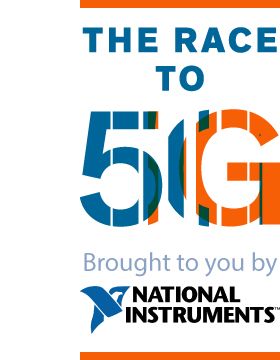
Advertisement
Editor’s Picks
Applications of Device-to-Device Communication in 5G Networks
Experts Disagree on Top Applications for 5G
Mobile World Congress 2018: 5G’s Killer App May Not Be an App at All
VTT Technical Research Centre of Finland and mobile giant Nokia have joined forces to determine how 5G networks can transmit information to and from vehicles while on the road. To do this, they are testing the capabilities of 5G network technologies when combined with VTT’s robot car, called Martti.
The research is the combined effort of a consortium of Finnish companies and research institutes, including VTT and Nokia. As part of the 5G-SAFE project, researchers are studying what kind of novel road safety services, such as road condition and real-time incident information, 5G will enable for supporting autonomous driving.
These road safety services will rely on sensors and Internet of Things (IoT) devices to collect data from a robocar’s LiDAR, radar, video systems and roadside infrastructure such as weather stations, traffic cameras, and traffic lights. These devices will communicate over 5G networks to cloud-based services and algorithms for processing information and alerts to other vehicles in the area.
Researchers have been working to bring the data processing closer to the vehicles by the means of edge computing for reduced latencies and improved scalability, according to Tiia Ojanperä, Senior Scientist and Project Manager at VTT. Now they are implementing the solutions into real 5G test networks and vehicular platforms for validation.
“We were running the first pilot in June, where VTT’s robot car ‘Martti’ was connected to a 5G test network available in a vehicle test track in Sodankylä, Finland,” said Ojanperä said in an email interview. “The test network in question was still pre-5G, and waiting for real 5G capabilities that will be deployed once the equipment (i.e. network devices and user terminals) is commercially available.”
In the pilot, VTT’s robot car Martti was used to test the ability to detect obstacles and grooves in the road by the means of collaborative sensing. The demo was based on the transmission of 16-layer LiDAR sensor data on a 12.5 Hz frequency from another test vehicle to VTT’s MEC server located in the 5G-test network. The MEC server hosted an algorithm, which optimized Martti’s route.
The second and most recent test VTT and Nokia jointly conducted in August involved a similar communication of Martti’s sensor data to a server via Nokia’s prototype 5G equipment.
For as long as 5G networks have been on the horizon, observers have speculated about the main applications for these new networks, including certain automotive applications. Recently, experts have questioned whether it’s practical to use 5G for autonomous vehicles when mobile coverage of all the remote and rural roads is so limited.
The 5G-SAFE research project has incorporated this coverage limitation into their strategy in building out the technology.
“In the project, we assume that multiple radio technologies (e.g. 5G, 4G, ITS G5 or even satellite) will eventually be used in implementing the services, as not all the 5G capabilities (low latency, high bandwidth, etc.) will be available everywhere the vehicles travel,” said Ojanperä. “The idea is to select the most appropriate means of communication dynamically among the available ones. Also, the services will need to be adapted to the network capabilities, and in some remote or rural areas, only a subset of the features and information may be available.”
While this strategy may address coverage issues, questions remain about what aspects of driving could be safely handled over a 5G network as opposed to within the car's computers. Ojanperä believes that 5G-enabled distributed cloud services, such as the ones developed in the 5G-SAFE project, and direct vehicle-to-vehicle communication can essentially provide more knowledge to connected and automated vehicles of their surroundings to improve safety.
“One of the biggest benefits [of 5G networks] is edge computing and its enabled distributed crowd-sourcing opportunities,” said Ojanperä. “Edge computing is not access technology dependent, but the broad bandwidth of 5G makes it useful by enabling real-time local dynamic map updates and communicating even raw sensor data between vehicles via intelligent infrastructure.”
Ojanperä concedes that vehicles will still need to function without this additional information if the connection to the services is lost. In those situations, Ojanperä says the vehicles will have to rely on their own sensors with a limited range or implement some fail-safe functionality, like stop operation, when connectivity has been lost.
With the test environments and communication solutions in place, the next step will be to develop more advanced intelligence on top of the collected vehicular data, according to Ojanperä.
Ojanperä added: “It is not a big secret that real-time and reliable data is the oil, which enables machine-learning algorithms to make cars and transport systems evermore intelligent. Connectivity is the key enabling technology for pushing forward the transport automation mega-trend.”



